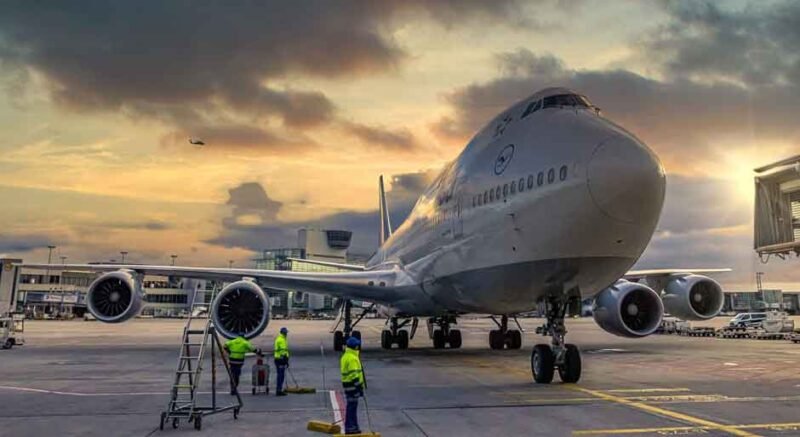
Air travel, with its soaring marvels and complex logistics, is an intricate dance of preparation and precision. Ever wondered what unfolds behind the scenes before you take off on your journey? Long before passengers arrive at the airport, a well-coordinated symphony of actions takes place to ensure that every flight is safe, efficient, and comfortable. In this article, you’ll unveil the secrets of what happens before a flight, providing you with six insightful glimpses into the world of aviation preparation.
1. Flight Planning and Preparation
The process of planning a flight begins long before you even think about heading to the airport. Pilots, dispatchers, and a team of aviation experts work tirelessly to calculate the optimal flight route. They take into account various factors, such as current weather conditions, air traffic forecasts, and fuel consumption estimates. The goal is to create a flight plan that not only ensures safety but also guarantees the most efficient and on-time arrival. Flight planners scrutinize every detail, ensuring that every component aligns perfectly.
2. Aircraft Maintenance and Inspection
Safety is the bedrock of aviation, and it all starts with meticulous aircraft maintenance and inspection. A dedicated team of highly skilled technicians, armed with tools and equipment such as pushback tugs for aircraft, delves deep into every crevice of the aircraft, from the formidable engines to the robust landing gear. Routine maintenance procedures are religiously followed to ensure that the aircraft is in impeccable condition. Any potential issues are identified and addressed promptly. This stringent inspection process, backed by essential equipment, serves as a critical safeguard against mechanical failures during flight.
3. Fueling and Load Planning
Fueling an aircraft is a precise and highly orchestrated operation. Ground support personnel are responsible for ensuring that the aircraft receives the exact type and quantity of fuel required for the journey. Simultaneously, load planners meticulously distribute passengers, cargo, and baggage throughout the aircraft. Weight distribution is not merely a matter of logistics; it’s about maintaining the aircraft’s equilibrium and stability throughout the flight. Proper load planning is essential to ensure a safe and balanced takeoff and landing.
4. Security Screening and Passenger Boarding
As passengers make their way to the airport, an integral part of the pre-flight process unfolds—Security screenings. At this juncture, the primary focus is on creating a secure and safe travel environment. Airport security personnel employ cutting-edge screening technology to detect any prohibited items, ensuring the safety of all passengers and crew members. Once cleared by security, passengers proceed to the gate area for boarding. Airlines adhere to well-defined boarding procedures designed to make the process as efficient and organized as possible.
5. Cabin Preparation
While passengers await boarding, diligent cabin crew members are hard at work preparing the aircraft’s interior. Their tasks include meticulously cleaning the cabin, restocking essential supplies, and conducting thorough safety checks. Cabin crew members also engage in comprehensive reviews of emergency procedures to ensure they are well-prepared for any unforeseen situations. The aim is to create a comfortable and safe environment for passengers throughout their journey. The meticulous attention to detail reflects the airline’s commitment to passenger comfort and safety.
6. Cockpit Preparation and Crew Briefing
In the cockpit, pilots embark on a journey of their own—one that involves a meticulous pre-flight checklist. Every system, from avionics to controls, is scrutinized to ensure optimal functioning. Pilots review the flight plan, carefully considering weather conditions and any potential challenges they might encounter during the journey. This stage also includes a critical crew briefing, where pilots and crew members discuss their respective roles, responsibilities, and emergency procedures. This level of preparation ensures that the flight crew is poised and ready to handle any situation that may arise during the flight.
Conclusion
Air travel may seem seamless from a passenger’s perspective, but it is, in fact, an intricate ballet of preparation and execution. From the early stages of flight planning to rigorous aircraft maintenance, security screening, and passenger boarding, each facet of pre-flight preparation contributes to the success of your journey. The next time you step onto an aircraft, take a moment to appreciate the dedication of the professionals who work diligently behind the scenes. You can rest assured that every aspect of your flight has been meticulously managed to ensure your safety, comfort, and the on-time arrival of your journey.

